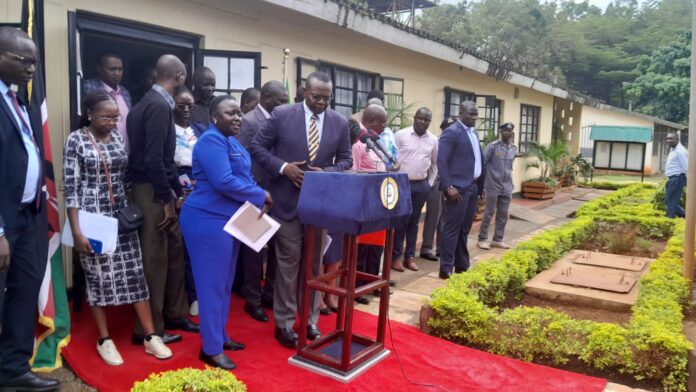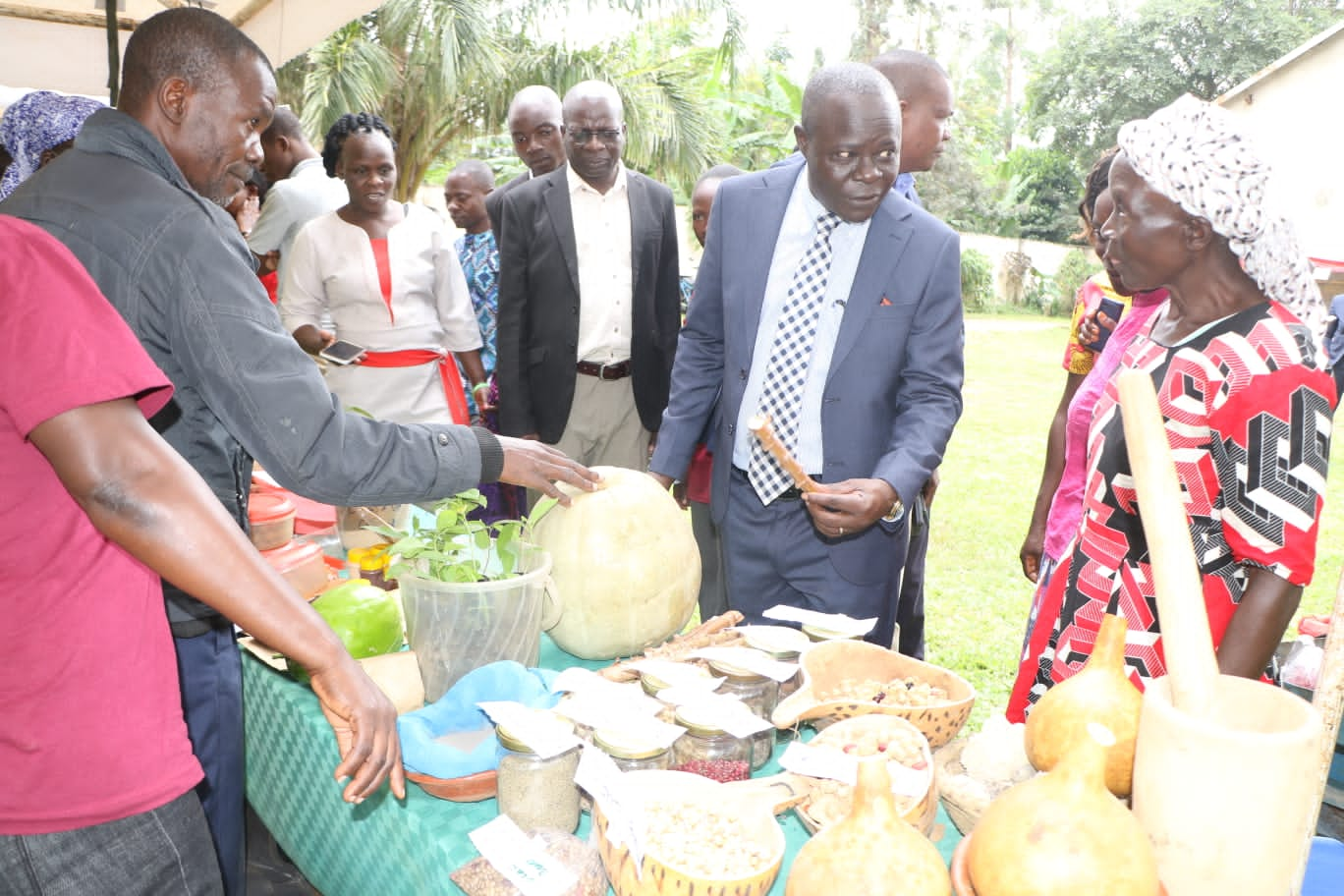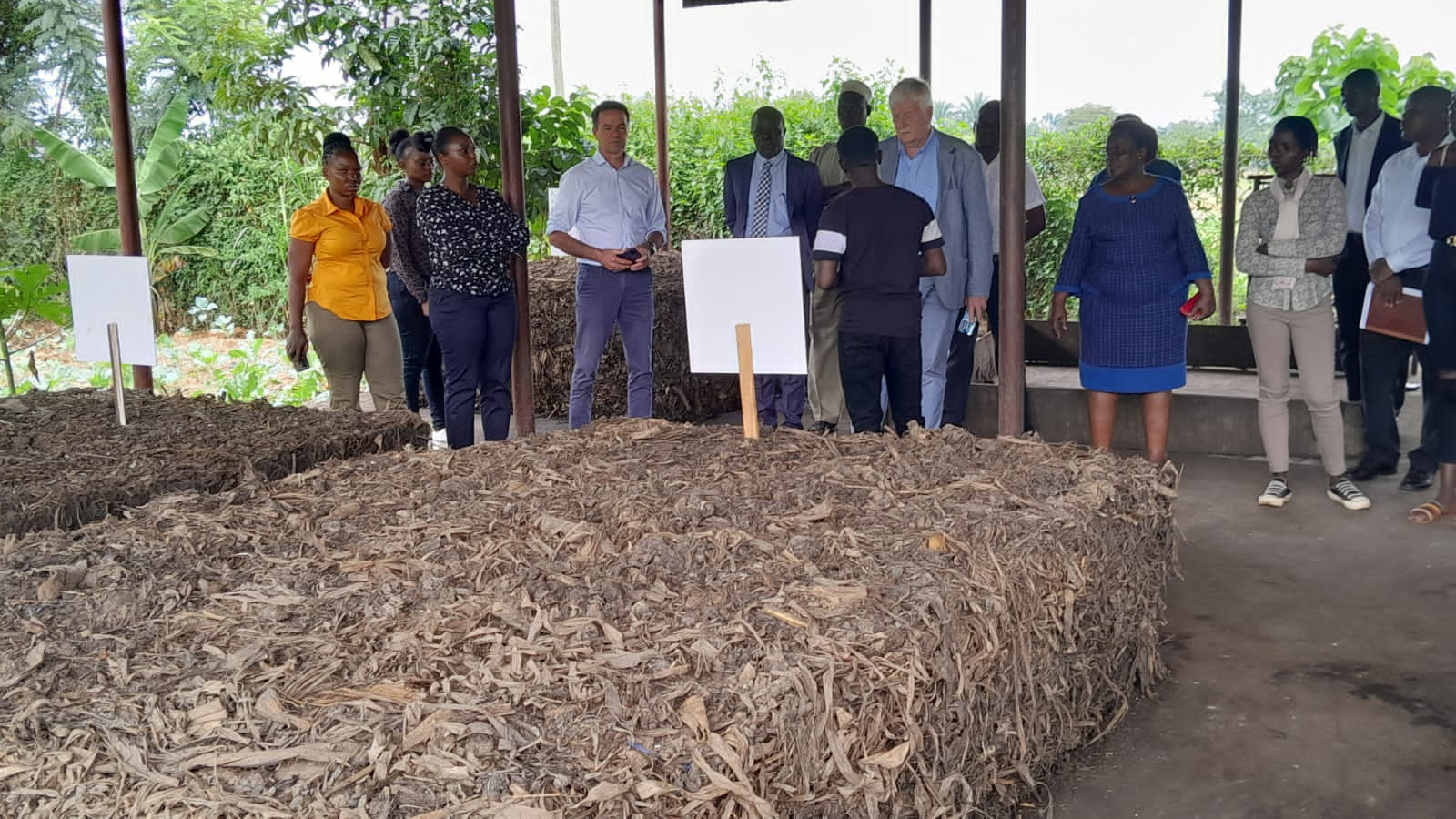
By Okong’o Oduya
Busia County, Kenya: Busia County government has embarked on a sensitization exercise for farmers to plant cotton. This is in line with preparation for the County industrial and aggregation park at Nasewa.
According to Busia governor Dr. Paul Otuoma, the departments of Agriculture, trade, cooperatives and the County Assembly of Busia are sensitizing farmers in the County to plant cotton not only to provide the raw material for the cotton ginnery but also to produce raw material for edible oil factories.
“Through the department of agriculture, trade, cooperatives, and County assembly we are making sure that the farmers are being sensitized, and also talked to the members of the County Assembly of Busia to make sure that this is ward-based economic revitalization program to produce edible oil and cotton so that they can fit into these industrial parks,” said Dr. Otuoma.
He announced that the County government is recruiting 40,000 farmers across the County who will be involved in planting cotton and other crops that will produce edible oil.
“We want to recruit almost 40,000 farmers across the County, a minimum of 1000 farmers per ward, in all 35 wards which means a quarter of Busia’s population are going to be affected by this program of economic revitalization through the use of County industrial and aggregation parks that are fed through agriculturally produced products,” he noted.

While addressing the team from the Ministry of Trade and Industrialization in his office while inspecting the level of preparedness in constructing the parks, Dr. Otuoma noted they are ready for the project after factoring it into the budget and the county-integrated development plan adding that cotton, groundnut and Sim Sim farming is not new in Busia and what they require is to have the extension officers to help expand the growth of the crops.
“This is a project that we have already mainstreamed in the budget and our county integrated development plan. Cotton, sesame/simsim, and groundnut farming are not something new for us. We only need to bring extension officers to help improve productivity and streamline production to a level that can sustain an industrial park and have an economic impact on the people of Busia.”
Kenya National Chamber of Commerce and Industry (KNCCI) chairperson of the Busia chapter Mr. Sylvanus Abungu promised to support the projects to make sure the people of Busia empower themselves economically.
“This project is going to see many people in Busia get jobs from it. As the Chamber of Commerce and Industry Busia chapter, we are going to work closely with the county and National government to make sure that the project is materialized,” he said.

Elsewhere during the agricultural investors’ forum in Busia County, the Executive Committee member in charge of livestock, agriculture and fisheries, and blue economy Dr. Simplicius Mukok, said as a department they are going to form cooperatives to aggregate all the cotton farmers to help them access direct markets for their produce.
“We have the ginnery with the capacity of ginning 10 tons per day but we don’t have enough raw material, what they are ginning right now comes from Uganda that is why I am calling upon our farmers to embrace cotton farming, the market is there, we are in an MoU with RIVATEX for direct offtake so the market should not be a problem.”
He added,” We are going to form cooperatives that are going to aggregate all this cotton so that it reaches the market.”
Dr. Mukok further noted that, as a county, they have partnered with other partners in a demonstration project where they work on waste management to develop organic manure through a program called ‘Finish Module’ that deals with solid waste management at the Agricultural Training Centre.
“With other partners, we have got a project called finish model, which deals with solid waste management at the ATC farms where waste collected from the market including sewage is recycled and treated to form organic manure, and with the demonstration farms we have seen, that is the way to go,” he said.
He, however, noted that they are yet to release the fertilizer to the public until they go through all the tastes required.
“We have not reached a stage where we can release the fertilizer to the farmers because it requires certain tests and we also need to certify it by the Kenya Bureau of Statistics because we don’t want a situation where we release poison to the food chain then it poisons the consumers. We are still experimenting with it, but it is a good way to go. It has the potential since we use locally produced waste,” he noted.













